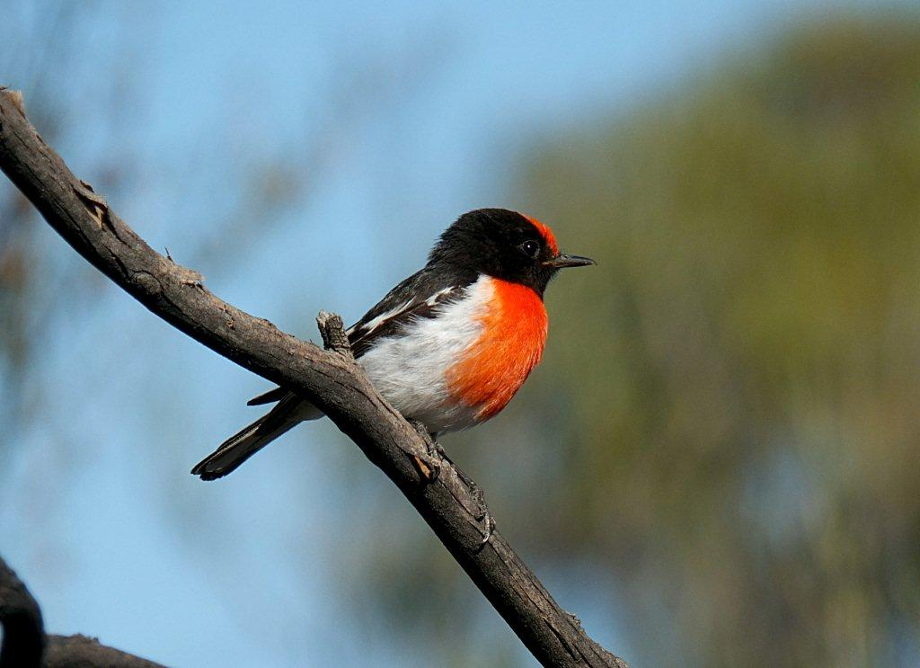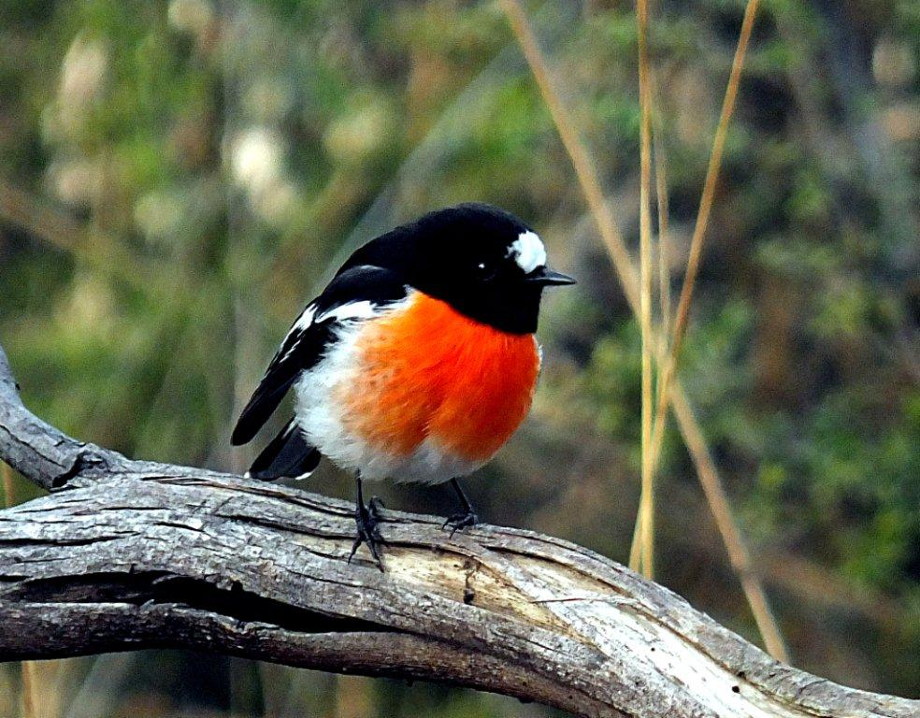
Victoria is blessed with five red robins – Scarlet, Flame, Red-capped, and the much more elusive Rose and Pink. The entire robin family is quite large, consisting of around 20 species depending on which field guide is being referred to.
Photos and words by ‘Gouldiae’.
At this time of year in Gippsland, the Scarlet Robin (pictured below) and Flame Robin (pictured last) begin to appear in the woodlands and paddocks of the lowlands. Both birds move down from the highlands during winter and some Flame Robins will cross Bass Strait from Tasmania to take up residence for the colder months on the plains of South Gippsland. It is not unusual for particular pairs or families to return to the same favourite patch of habitat each year.
ADVERTISEMENT
The Red-capped Robin (pictured top) was once a regular visitor too south of the Great Dividing Range but their range is being increasingly restricted to more inland country.

The three common ‘red robins’ adopt the perch-and-pounce feeding technique. Often they perch on an exposed branch, stump or fence wire from where they dart out to forage on some insect on a leaf or on the ground, often returning to the same vantage point after each sortie.
Drought and summer bushfires in the high country were the probable cause of a noticeable decline in the numbers, particularly of Scarlet Robins, in the previous decade. It is delightful to notice that their populations seem to be increasing again and it’s always worth checking any healthy patch of open woodland for that stunning red flash.
ADVERTISEMENT

For more from the author, click here to visit ‘Gouldiae’s Blog’.




Saw one of the Scarlet Robin’s the other day in our back garden in Warragul, a beautiful little creature.